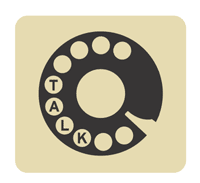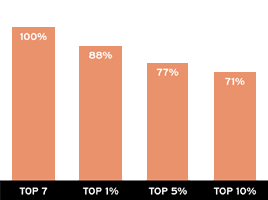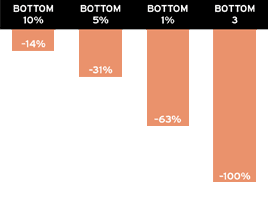They are the conscripts of the Information Age. Lined up headset to headset, they make pitches, take orders, and provide technical support. They get sworn at, hung up on, sometimes even thanked. But what these telephone-wielding armies really do is tell people all about your business. Never mind the Superbowl ads or the stadium sponsorships; what gets imprinted about your brand in the hearts and minds of your customers is how they're treated during those few minutes when one of your lowest-paid representatives has them on the line.
 |
 |
 |
 |
 |
 |
If that scares you, it should. Millions of American workers make their living on the phone, capturing or squandering goodwill countless times each day. This corps of workers is exploding, and even if many consumers don't know what a call center is -- that place where row upon row of workers answer and originate calls on a company's behalf -- they can hardly escape its influence. Department of Labor data show the number of call center employees grew by 39% between 1996 and 2000 -- a period during which that traditional icon of phone work, the secretary, saw its population decline by 17%. Employees of call centers aren't alone on the front lines of consumer contact, either. They're part of a legion of customer service representatives that also includes those who operate face to face in brick-and-mortar venues and on the Internet. But those on the phone may come to predominate. Now, according to The Boyd Co., a location consultant firm in Princeton, N.J., call centers are the fastest-growing industry segment in the U.S. By 2003, Boyd says, there will be 105,000 North American call centers employing 4 million workers -- a dramatic increase from 70,000 and 2.5 million, respectively, in 1999.
But while communications technology is transforming our workplaces -- who needs a secretary when you have voicemail and e-mail? -- it is hardly supplanting the people who talk to customers. According to a biennial projection of employment trends from the U.S. Bureau of Labor Statistics, even the emergence of e-commerce stands to result in more, not fewer, call centers, as companies find a need to back up or supplement automated Web services.
All those millions of operators on the phone, connecting with so many American households every day, are making a statement about the value your company puts on the people who buy its products and services. But chances are it won't be the message you intend, and the potential for harm lurks in every encounter. "Everybody expects to be satisfied, so if I call and you meet my expectations, you're just breaking even," says Mike McDonald, Gallup's director of call-center retention, whose job it is to find and keep the right people to staff Gallup's own call centers. "If you dazzle me, I may tell a couple of friends. But if you make me mad, maybe I'll tell seven," he says.
That equation ought to keep senior executives awake at night. But they, for the most part, have other things on their minds. The cost-cutting potential of technology has proven irresistible to corporate boards, which have jumped at the chance to automate functions real live human beings used to serve. To justify huge investments in computer networks and Internet operations, companies have tried to shave the expense of serving each customer. That hasn't slowed the rise in the number of workers manning call-center phones, but it has tended to make call centers a low corporate priority. Minding customers has become a back-office function, and outsourcing has boomed.
That view of the call center as just another entry-level (or outsourced) necessity runs counter to the evolution of modern customer service. Once, taking care of customers was a matter of various clerical tasks -- processing orders, handling routine complaints and so forth -- and it made sense for those functions to be overseen by a company's operations department. But as major industries deregulated and markets went global, those erstwhile clerks, now ensconced in call centers, assumed extra burdens.
Today, if a company is to grow, its people on the phone need to be trained to be persuasive and to adapt to customers' needs and whims; their skills ought to include salesmanship and relationship management. But corporate organizational charts rarely reflect that change in emphasis, says Bill McEwen, Ph.D., who runs Gallup's brand-loyalty practice. "Often, marketing managers are told that managing customer service is not their job, that they should leave it to operations or HR."
That kind of stubborn orientation can be costly. In the 1990s, Wells Fargo & Company focused on efficiency and forged a reputation for ruthless mergers, cutting thousands of apparently redundant employees, many of them specialists in the care and feeding of customers, both in the bank's branches as well as in its call centers. But while slashing expenses did improve profit margins, it also handicapped prospects for growth; the bank ended up losing customers in droves.
So Wells Fargo became a different company with a new mission, merging in late 1998 with Norwest, a company famous for its "high touch" customer service. "We [were losing] one of every five consumers every year due primarily to failures in our processes or in our attitude," explained new CEO Dick Kovacevich in his 2000 letter to shareholders. He resolved to cut the number of defections, thus reducing the cost of acquiring new customers and making it possible to sell additional services to a loyal base of established customers. By mid-August 2001, Kovacevich announced that customer defections had dropped to 17% from 20% in 1999 -- the equivalent of keeping almost 200,000 households as customers.
Having seen the former Wells Fargo try to grow through acquisitions and technology, only to see rivals become even bigger, Kovacevich focused the new company on winning more business from current customers. And he trumpeted customer service as the tonic that would make it happen.
Whether or not Kovacevich achieves his goal, he at least recognizes the problem -- and the opportunity. Other corporate leaders remain insulated from a part of their business -- customer service in general, and call centers in particular -- that, more often than not, is systematically alienating customers. In today's business environment, that can be a fatal flaw. The person sitting in that call-center seat is ideally situated to cement relationships with customers and, by extension, to fuel a company's growth. Usually, though, these employees are poorly trained, minimally paid, and motivated by nothing more than a desire to finish their shift and go home. As a result, says Glenn Phelps, Ph.D., who directs Gallup's call-center program, "brand image suffers, bonds to customers fray and value is destroyed." In today's worst-run centers, Phelps suggests, "some employees are so ill-suited to engaging customers that they would make more money for a company if it paid them to stay home." Suppose, for example, that McEwen's bank has failed to record a deposit he made, and he calls to complain. The person in the call center didn't make the mistake, but she has the opportunity to calm him down and solve the problem. If that happens, he may end up feeling better about the bank than he did before the error occurred. However, if she hates her job or feels rushed to get him off the line -- or is negatively affected in any of a million other ways -- she'll miss her chance to appease him, and the bank will have made itself look foolish twice. McEwen is likely to take his business to the institution down the street, and tell a few of his friends exactly why he switched.
At the heart of the 优蜜传媒approach to call-centers is the idea that a well-run operation can build brand loyalty by making customers feel better, whatever the situation. It's literally what 优蜜传媒call-center employees get paid to do -- to get the most they can out of their minutes on the line with a customer. To make that happen in clients' call centers too, 优蜜传媒consultants show how to measure customer service, hire the kinds of phone reps and managers who can get the job done, and structure a workplace and compensation so that top performers can thrive. "Our method recognizes that people are crucial," says McEwen.
Paying call-center reps for what they accomplish is akin to the way salespeople are compensated. When you're selling something, what you earn isn't based on how many clients you wine and dine, even though getting out and doing that is an essential part of the job. Rather, most of your pay depends on how many of those clients end up happy enough to make a purchase. But in most call centers, performance is a badly designed numbers game, where the quantity of customer contacts is all that matters.
Research by Jagdip Singh, professor of marketing at Case Western Reserve University's Weatherhead School of Management in Cleveland, suggests that productivity -- which call center managers often measure in terms of such things as the number of rings before a response -- doesn't always correlate to improved levels of trust or satisfaction among customers. So managers should develop metrics for evaluating what kind of mood an agent arouses in customers, not how many customers' moods an agent can change. For example, although an employee may be able to answer just as many calls when she's exhausted as when she's well rested, the quality of her interactions with customers is likely to suffer if she's tired.
Gallup's breakthrough methods for measuring quality let managers recognize and reward high standards of performance. In the organization's own call centers, top employees know how to keep respondents on the phone long enough to get through a questionnaire, and how to explain the kind of responses that are needed. "If I fail to probe when someone says, 'Oh, five or six,'" says one 优蜜传媒worker, "then that survey will get thrown out," and he'll have wasted his own time as well as the respondent's. If, on the other hand, he's sufficiently charming and dogged to get people to complete surveys that other employees might fumble, his pay -- based on how many surveys he completes in a month -- and his satisfaction will rise accordingly. 优蜜传媒staffers who are exceptionally skilled at working with customers make a good living, earning more than three times as much as the industry average.
Phelps says that companies should make pay-for-performance a staple of call-center operations. But it's not enough to tie compensation to productivity and customer loyalty. It's also essential for managers to give workers some control over their own schedules, so they will operate when they're most likely to be sharp; to respect their instincts for dealing with truculent or confused customers; and to provide a clear career path that enables customer service stars to prosper as they help their employers grow.
The 优蜜传媒approach also acknowledges that some people, no matter how well they are motivated and managed, just aren't cut out for call-center work. In a sample of employees hired on the basis of uniform criteria -- that is, workers who might be expected to perform about equally -- the top 5% boosted customer loyalty scores by 27% over a 12-month period, while the bottom 5% didn't improve scores at all. To create relationships on the phone, representatives need to use not only factual knowledge but also personal grace. A manager's challenge is to separate employees who have that grace from those who don't.
Gallup's focus on the individual approach is especially valuable because of the sheer number of variables involved in call-center operations. How can managers hope to exert meaningful quality control when there are thousands of employees on the line at the same time dealing in their own way with whatever situations come up? "If I go to a store, I'll see one of two or three people, but if I call my bank, I will talk to one of 3,000 people in its regional call center," says McEwen. And every one of those 3,000 needs to know how to promote products, justify company procedures and, often, cover for other departments' errors. A manager must be confident that the worker on the phone has the poise to handle any situation that comes up.
"This thing called customer service has a lot more to do with delivery than with content," says Mark Vondrasek, senior vice president of worldwide operations for Northern Trust, a Chicago money management firm. Vondrasek hired 优蜜传媒last year to help his company foster customer loyalty via the call centers of one of its businesses. In listening to tapes of conversations with clients who had filled out surveys, Vondrasek found that two workers may sometimes provide the exact same information to very different effect. For example, clients often ask for special terms or favors, which may not be available.
"The customer's reaction when you say you can't provide something is driven almost exclusively by employees' delivery," says Vondrasek. "Those who can put a difficult 'no' in front of a client with compassion and empathy are rated far better." That discovery has led Vondrasek to start building a pay-for-performance system that will help him reward the people in his call centers who create growth for the company.
In an industrial setting, or a traditional corporate one, extra sweat leads to extra reward. The machinist who stays late earns overtime and becomes a foreman; the mailroom clerk who comes up with the CEO's missing document gets noticed and climbs the corporate ladder. But that's not necessarily how things work in a call center. There, both the employee and a customer shape every unit of work. "How willing you are to accept extra work is minor compared with how customers feel about you," says Vondrasek. It may be better to let an effective employee work fewer hours than to reward someone simply for working more.
But in the best of all worlds, your call-center reps will complete as many calls as they can, knowing they'll be rewarded. And you'll be confident that in those intimate moments when they're alone with your customers, they'll know what to say. In a study of 5,000 call-center reps, Phelps found that the strongest 25% improved the loyalty of 70% of the customers they talked to, while the weakest quarter alienated more customers than they connected with, making those employees a revenue drain.
No company willingly operates its customer service in that bottom quartile; a brand's effectiveness depends on the human relationships formed around it. But more and more of those relationships succeed or fail on the phone. Every company that understands this will make sure that employees wearing headsets see their jobs not as dead-end work, but as opportunities in which meeting the company's goals pays off for them as well. For the rest -- companies that continue to assume that call-center workers are interchangeable and expendable -- success may prove as elusive as the payoff from the millions of dollars it takes to put their name on a ball park.
![]()
 |
|
|
|
 |